- Home
- >
- Technology
- >
- Working principle dynamic diagram and pressure test method of various valves
Working principle dynamic diagram and pressure test method of various valves
Working principle dynamic diagram and pressure test method of various valves
Generally, the strength test is not conducted for industrial valves in use, but the strength test shall be conducted for the repaired valve body and bonnet or the valve body and bonnet with corrosion damage.
The commonly used media for valve pressure test include water, oil, air, steam, nitrogen, etc. the pressure test methods of various industrial valves including pneumatic valves are as follows:
Pressure test method of ball valve
The strength test of pneumatic ball valve shall be carried out when the ball is half open.
1. Sealing test of floating ball valve
The valve is in the half open state, one end is introduced into the test medium, and the other end is closed; Turn the ball several times, open the closed end when the valve is closed, and check the sealing performance of the packing and gasket at the same time, without leakage. Then introduce the test medium from the other end and repeat the above test.
2. Sealing test of fixed ball valve
Before the test, rotate the ball several times without load, the fixed ball valve is closed, and the test medium is introduced from one end to the specified value; Check the sealing performance of the lead-in end with a pressure gauge. The accuracy of the pressure gauge is 0.5 ~ 1, and the measuring range is 1.5 times of the test pressure.
If there is no pressure drop within the specified time limit, it is qualified; Then introduce the test medium from the other end and repeat the above test. Then, the valve shall be in the half open state, both ends shall be closed, and the inner cavity shall be filled with medium. Check the packing and gasket under the test pressure, and there shall be no leakage.
3. The three-way ball valve shall be subject to sealing test at each position.
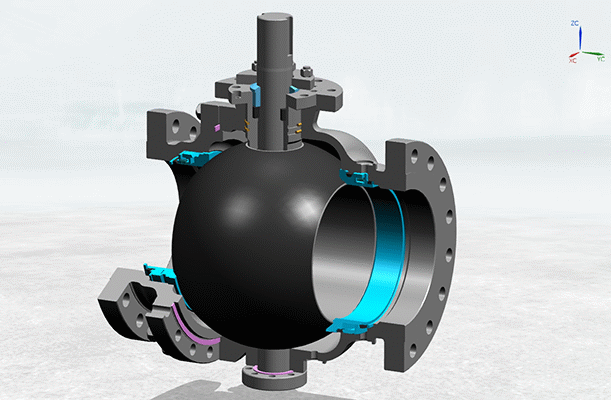
Pressure test method of check valve
Test status of check valve: the axis of lift check valve disc is in a position perpendicular to the horizontal; The channel axis and disc axis of swing check valve are approximately parallel to the horizontal line.
When there is no leakage from the inlet end of the valve body to the other end of the valve cover, the strength test is qualified.
For the tightness test, the test medium is introduced from the outlet end, and it is qualified if there is no leakage at the sealing surface, filler and gasket at the inlet end.
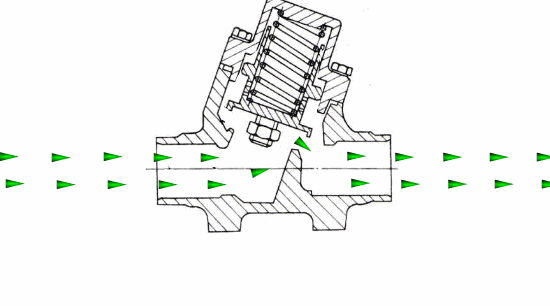
1. The strength test of pressure reducing valve is generally assembled after single piece test, and it can also be tested after assembly.
Duration of strength test: lmin with DN < 50mm; DN65 ~ 150mm, more than 2min; If DN > 150mm, it shall be more than 3min. After the bellows and components are welded, the strength test shall be conducted with air at 1.5 times the maximum pressure behind the pressure reducing valve.
2. The tightness test shall be conducted according to the actual working medium.
When testing with air or water, the test shall be conducted at 1.1 times the nominal pressure; When steam test is used, it shall be carried out at the maximum allowable working pressure under the working temperature. The difference between inlet pressure and outlet pressure shall not be less than 0.2MPa.
The test method is: after the inlet pressure is set, gradually adjust the adjusting screw of the valve to make the outlet pressure change sensitively and continuously within the range of maximum and minimum values without stagnation and jamming.
For the steam pressure reducing valve, when the inlet pressure is adjusted, close the block valve behind the valve, and the outlet pressure is the highest and lowest value. Within 2min, the appreciation of the outlet pressure shall comply with the provisions in table 4.176-22. At the same time, the volume of the pipeline behind the valve shall comply with the provisions in table 4.18.
For water and air pressure reducing valves, when the inlet pressure is set and the outlet pressure is zero, close the pressure reducing valve for sealing test. It is qualified if there is no leakage within 2min.
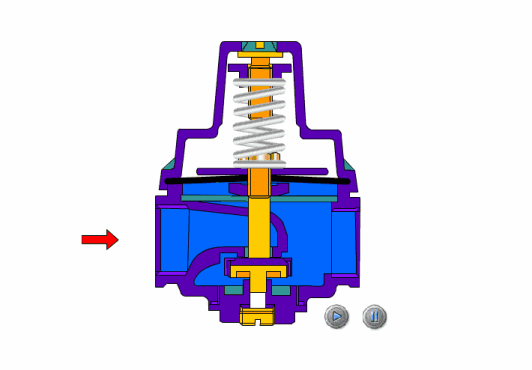
Pressure test method of gate valve
The strength test of gate valve is the same as that of stop valve. There are two methods for sealing test of gate valve.
1. The ram is opened to raise the pressure in the valve to the specified value; Then close the ram, take out the gate valve immediately, check whether there is leakage at the seals on both sides of the ram, or directly inject the test medium into the plug on the valve cover to the specified value, and check the seals on both sides of the ram.
The above method is called intermediate pressure test. This method is not suitable for sealing test on gate valves with nominal diameter below dn32mm.
2. Another method is to open the ram to raise the valve test pressure to the specified value; Then close the ram, open the blind plate at one end and check whether the sealing surface leaks. Then turn over and repeat the above tests until they are qualified.
The sealing test at the packing and gasket of pneumatic gate valve shall be conducted before the sealing test of gate valve.
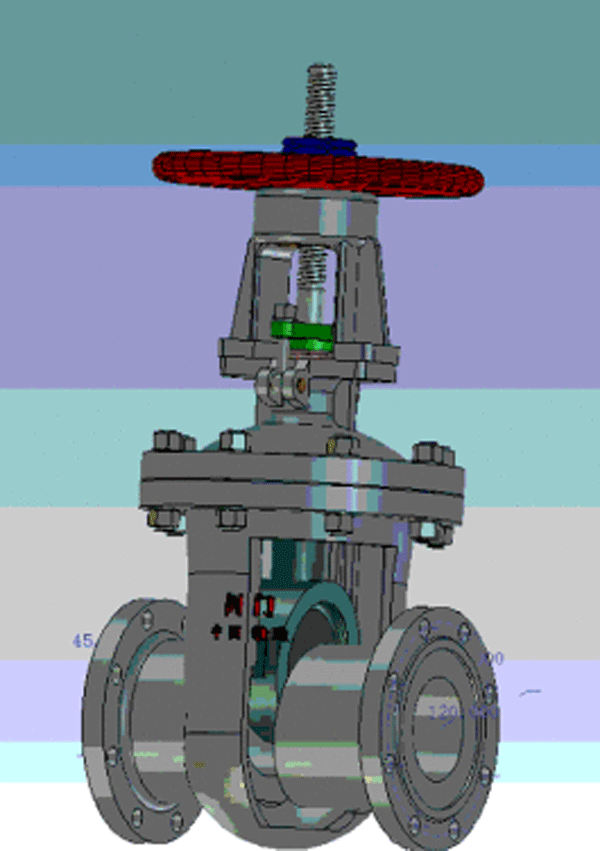
E、 Butterfly valve
Pressure test method of butterfly valve
The strength test of pneumatic butterfly valve is the same as that of stop valve.
For the sealing performance test of butterfly valve, the test medium shall be introduced from the medium flow end, the butterfly plate shall be opened, the other end shall be closed, and the injection pressure shall reach the specified value; After checking that there is no leakage at the packing and other seals, close the butterfly plate, open the other end, and check that there is no leakage at the seal of the butterfly plate.
As a butterfly valve for regulating flow, sealing performance test is not required.
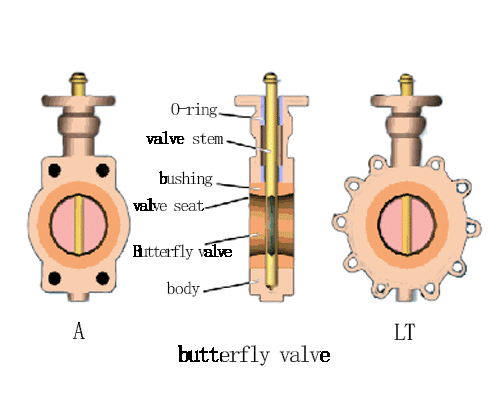
Pressure test method of plug valve
1. During the strength test of the plug valve, the medium is introduced from one end, the other channels are closed, and the plug is rotated to the fully open working positions for the test. If no leakage is found in the valve body, it is qualified.
2. During the tightness test, keep the pressure in the chamber equal to the channel pressure, rotate the plug to the closed position, check from the other end, and then rotate the plug 180 ° to repeat the above test.
The three-way or four-way plug valve shall keep the pressure in the chamber equal to that at one end of the passage, rotate the plug to the closed position in turn, introduce the pressure from the right angle end, and check it from other ends at the same time.
Before the plug valve test, it is allowed to apply a layer of non acid thin lubricating oil on the sealing surface. It is qualified if no leakage and expanded water droplets are found within the specified time. The test time of plug valve can be shorter, which is generally 1 ~ 3min according to the nominal diameter.
The plug valve for gas shall be tested for air tightness at 1.25 times the working pressure.
Pressure test method of stop valve and throttle valve
For the strength test of stop valve and throttle valve, the assembled valve is usually placed in the pressure test frame, the valve disc is opened, the medium is injected to the specified value, and the valve body and bonnet are checked for sweating and leakage. The strength test can also be carried out on a single piece. The sealing test is only for the stop valve.
During the test, the valve stem of the stop valve is vertical, the valve disc is opened, the medium is introduced from the lower end of the valve disc to the specified value, and the packing and gasket are checked; After passing the inspection, close the valve disc and open the other end to check whether there is leakage.
If the strength and sealing test of the valve are required, the strength test can be carried out first, and then the pressure can be reduced to the specified value of the sealing test to check the packing and gasket; Then close the valve disc and open the outlet end to check whether the sealing surface leaks.




;)
;)




